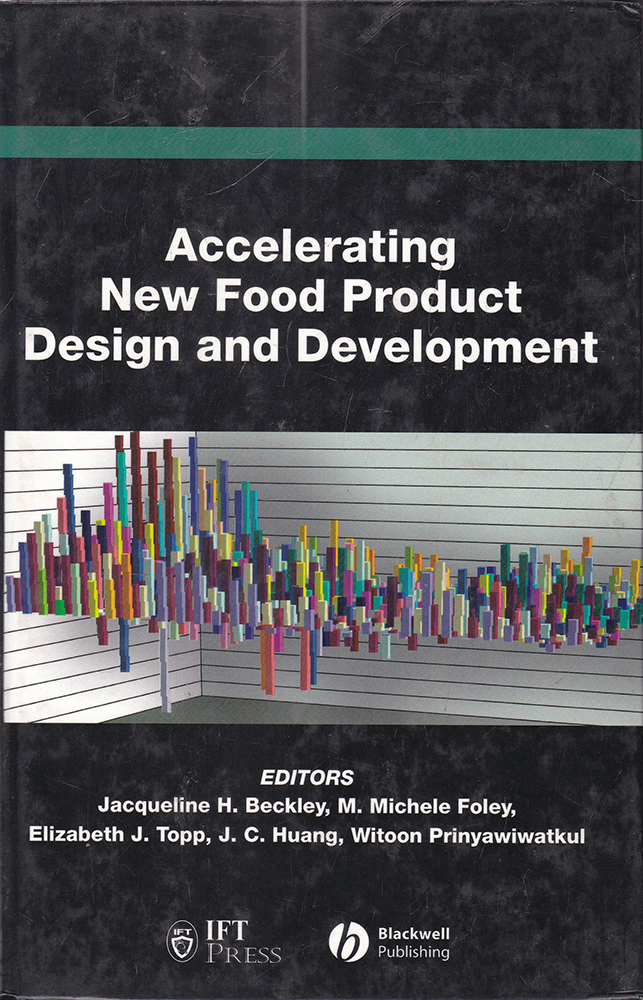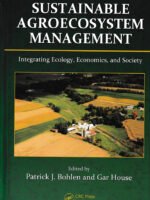Accelerating New Food Product Design and Development is of value to a number of audiences. For food industry executives, it offers a summary of perspectives of the business they are in from unique viewpoints. Academics and students gain a real world perspective of what is occurring in the food industry at the beginning of the 21st Century. And for practicing food scientists and allied professionals, the book provides strategic frameworks for problem solving and the R&D strategies, processes, and methods needed to accelerate and optimize new product development.
Accelerating New Food Product Design and Development
To compete in today’s marketplace, food product developers are under pressure to create innovative new products at a time when there are demands on them to do more with less of everything. In Accelerating New Food Product Design and Development, a group of seasoned food industry business professionals and academics show today’s food scientists, technologists, and product developers the contemporary R&D processes they need to maximize speed, quality, and efficiency.
Delivery
₹75 shipping all over India
Secure Payment
100% Secure Payment
₹10,646.00₹25,199.00
Out of stock
| SKU: | 9780813808093 |
|---|---|
| Categories: | Agriculture and Farming, Food Science |
| Tag: | Food Science and Technology Books |
Related products
-
Agromining: Farming for Metals: Extracting Unconventional Resources Using Plants
₹6,030.00This is the first book on global agromining/phytomining technology. It presents the complete metal farming or agromining chain; an emerging technology expected to be transformative in the extraction of resources of those elements not accessible by traditional mining techniques. Meeting the demand for critical minerals (rare earth elements, platinum group elements, nickel cobalt) is increasingly difficult in the 21st century due to resource depletion and geopolitical factors.
₹14,024.00 -
The Dry Forests and Woodlands of Africa: Managing for Products and Services
₹4,743.00The book provides a comparative analysis of management experiences from the different geographic regions, emphasizing the need to balance the utilization of dry forests and woodland products between current and future human needs. Further, the book explores the techniques and strategies that can be deployed to improve the management of African dry forests and woodlands for the benefit of all, but more importantly, the communities that live off these vegetation formations. Thus, the book lays a foundation for improving the management of dry forests and woodlands for the wide range of products and services they provide.
₹13,950.00 -
The Forest Service: A Study in Public Land Management
₹4,950.00‘This well-documented book provides a thorough survey of the several problems facing one of the major participants in the management of one of America’s natural resources. It belongs in the library of anyone involved in resources policy…’
₹11,250.00 -
Sustainable Agroecosystem Management: Integrating Ecology, Economics, and Society
₹5,306.00Emphasizes Centrality of the Ecosystem PerspectiveSustainable management of agroecosystems in the 21st century faces unprecedented challenges. Protecting the environment while feeding a burgeoning population that could reach nine billion by mid-century, preserving the world’s biodiversity, and sustaining agriculture in an increasingly urban world i
₹16,080.00 -
Temperate agroforestry systems
₹5,806.00Agroforestry is a land use system that allows for the concurrent production of trees and agricultural crops and/or animals from the same piece of land. It has a rich history of development and has been practiced in some parts of the world for more than 6,000 years. In 1997, CABI published the seminal book on this subject, Temperate Agroforestry Systems, which was a break from the norm as almost all agroforestry texts up to that date were only relevant to tropical areas. The book explored the development of temperate agroforestry and agroforestry systems, concentrating on those areas within temperate zones where the greatest advances, adoptions and modifications had taken place up to that time: North and South America, China, Australia, New Zealand and Europe.
₹10,750.00 -
Regulating the Liabilities of Agricultural Biotechnology
₹3,564.00This book examines how government, industry and society interact to reach a level of regulation that is deemed satisfactory for the newly-emerged transformative technology that is agricultural biotechnology. It considers issues of risk and trust surrounding genetically modified plants for the production of food and pharmaceuticals.
₹9,899.00 -
Plant-Environment Interaction: Responses and Approaches to Mitigate Stress
₹8,959.00The increase in global population, urbanization and industrialization is resulting in the conversion of cultivated land into wasteland. Providing food from these limited resources to an ever-increasing population is one of the biggest challenges that present agriculturalists and plant scientists are facing. Environmental stresses make this situation even graver. Plants on which mankind is directly or indirectly dependent exhibit various mechanisms for their survival.
₹16,899.00 -
Wild Product Governance: Finding Policies that Work for Non-Timber Forest Products
₹2,464.00Products from the wild, also known as non-timber forest products (NTFPs), are used as medicines, foods, spices, and a multitude of other purposes. They contribute substantially to rural livelihoods, generate revenue for companies and governments, and have a range of impacts on biodiversity conservation. However, there is little information available for those seeking to develop effective policy frameworks and regulation.
₹5,599.00









Be the first to review “Accelerating New Food Product Design and Development”